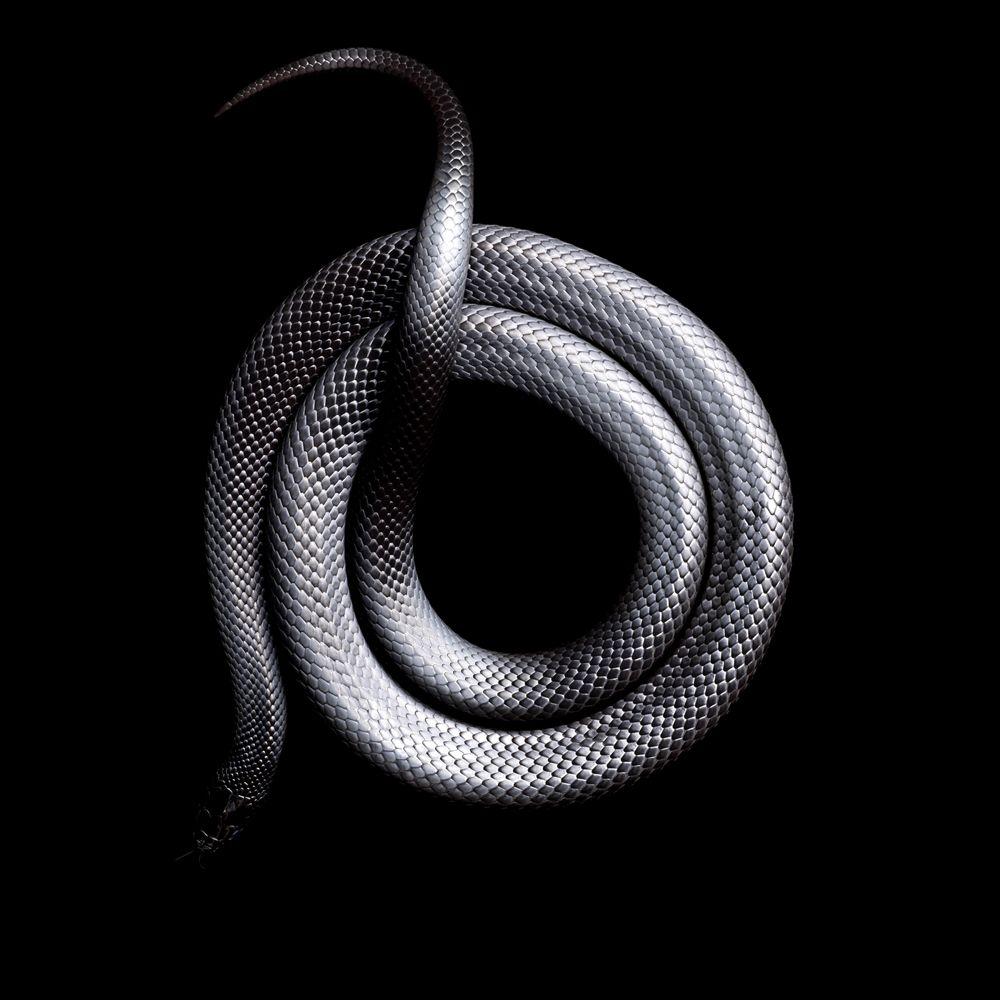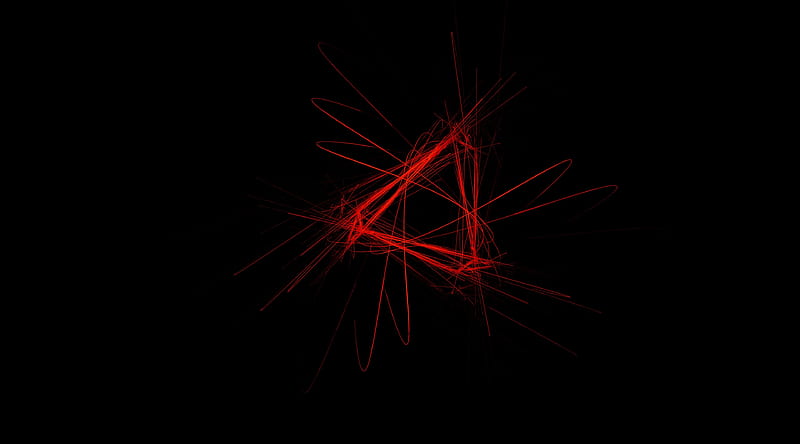Immortality
Some cultures regarded snakes as immortal because they appeared to be reincarnated from themselves when they
sloughed their skins. 
Snakes were often also associated with immortality because they were observed biting their tails to form a circle and when they coiled they formed spirals. Both circles and spirals were seen as symbols of eternity. The circle was particularly important to Dahomeyan myth where the snake-god Danh circled the world like a belt, corseting it and preventing it from flying apart in splinters. In Egyptian myth, the state of existence before creation was symbolised as Amduat, a many-coiled serpent from which Ra the Sun and all of creation arose, returning each night and being reborn every morning.

Also, the snake biting its tail (Ouroboros) symbolised the sea as the eternal ring which enclosed the world. In Egypt the snake has healing abilities. Hymns and offerings were made to it since it was believed that the Goddess could manifest through the snake.
"In a hymn to the goddess Mertseger, a workman on the Necropolis of Thebes relates how the goddess came to him in the form of a snake to heal his illness."
In Serer cosmogony and religion, the serpent is the symbol of the pangool, the saints and ancestral spirits of the Serer people of West Africa. When a person dies, the Serer believe that their soul must make its way to Jaaniiw (a place where goods souls go). Before the soul can reach Jaaniiw in order to reincarnate (ciiɗ in Serer), it must transform into a black snake. During this transformation, the snake hides in a tree. For this reason, it is taboo in Serer culture to kill snakes. A great degree of respect is afforded to snakes in Serer culture, as they are the very embodiment and symbol of their saints and ancestral spirits.
Like their Serer counterparts, the Dogon people of Mali also have great reverence for the serpent. The serpent plays an active role in Dogon religion and cosmogony. The mythology of the Dogon's primordial ancestor Lebe, it based almost entirely on a serpent mythology. In their traditional African religious belief, they say that the Serpent Lebe guided the Dogon people from Mandé to the Bandiagara Escarpment (their current home) when they decided to migrate to flee Islamization and persecution. The Dogon believe that Lebe is the very reincarnation of the Dogon's first ancestor—who was resurrected in the form of a snake.
In the Sumerian culture snakes were also very important as a healing symbol. In Hammurabi’s Law Code (c. 1700 BC) the god Ninazu is identified as the patron of healing, and his son, Ningishzida, is depicted with a serpent and staff symbol.

Creation Myths
Snakes were a common feature of many creation myths, for example many people in California and Australia had myths about the Rainbow Snake, which was either Mother Earth herself giving birth to all animals or a water-god whose writhings created rivers, creeks and oceans. In ancient Indian myth, the drought-serpent Ahi or Vritra swallowed the primordial ocean and did not release all created beings until Indra split the serpent's stomach with a thunderbolt.
In another myth, the protector Vishnu slept on the coils of the world-serpent Shesha (or "Ananta the endless";). Shesha in turn was supported on Kurma and when Kurma moved, Shesha stirred and yawned and the gaping of its jaws caused earthquakes.
In Chinese mythology, the woman-headed snake Nüwa made the first humans. She made humans one at a time with clay.
Delighted, she made another figure, and another and another, and each came to life in the same way. Day in and day out Nǚwā amused herself making mud figures and watching them come to life.
To conserve her energy, she dipped a rope in clay and flicked it so blobs of clay landed everywhere; each blob of clay became an individual human. The first humans of hers became high-class, but second ones became low-class.
Greek cosmological myths tell of how Ophion the snake incubated the primordial egg from which all created things were born.
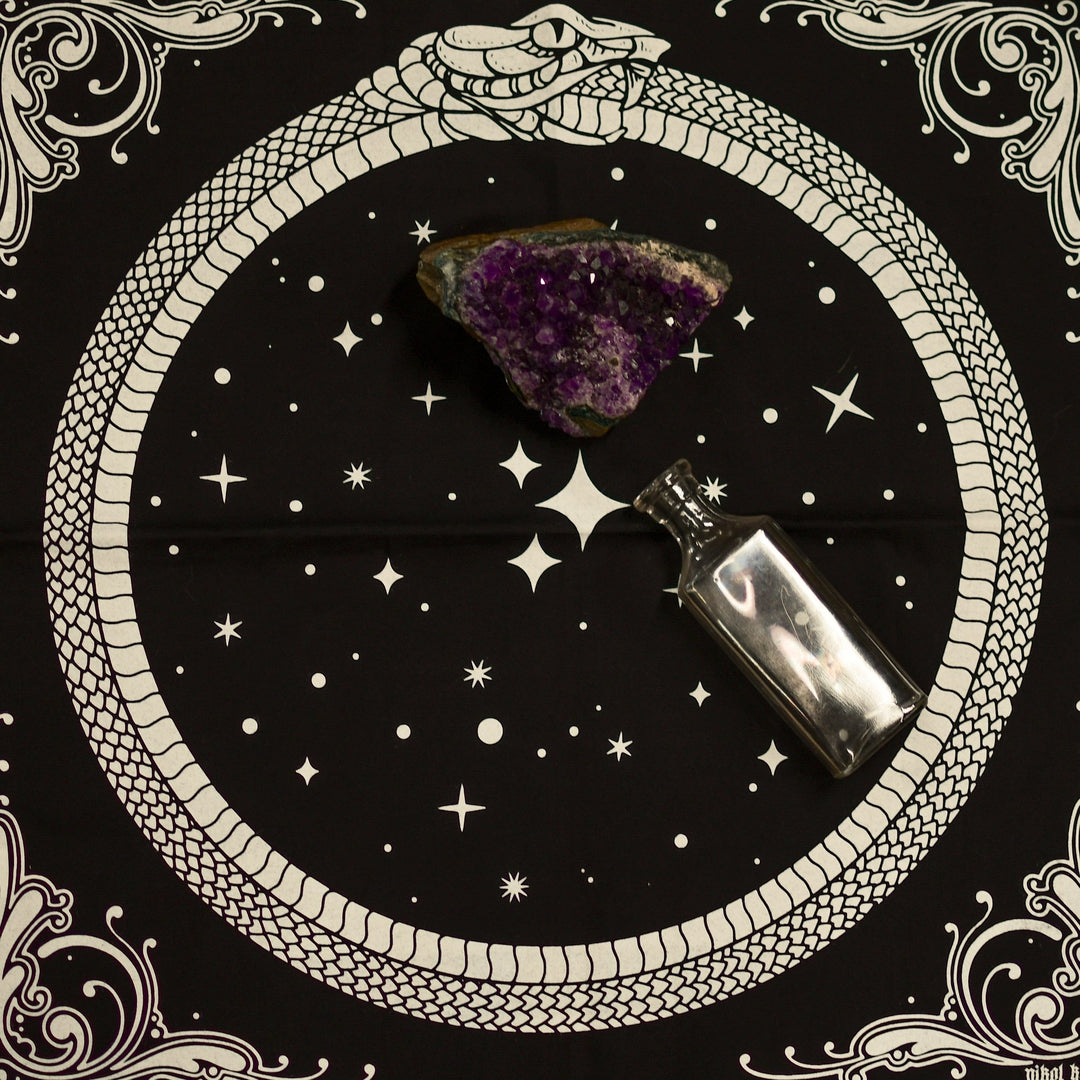 The classical symbol of the Ouroboros depicts a snake in the act of eating its own tail. This symbol represents the cyclical nature of life and death, life feeding
on itself in the act of creation.
The classical symbol of the Ouroboros depicts a snake in the act of eating its own tail. This symbol represents the cyclical nature of life and death, life feeding
on itself in the act of creation.

Underworld
Snakes were regularly regarded as guardians of the Underworld or messengers between the Upper and Lower worlds because they lived in cracks and holes in the ground. The Gorgons of Greek myth were snake-women (a common hybrid) whose gaze would turn flesh into stone, the most famous of them being Medusa. Nagas, "the demon cobra" and naginis were human-headed snakes whose kings and queens who lived in jewel-encrusted underground or underwater paradises and who were perpetually at war with Garuda the Sun-bird.
In Egyptian myth, every morning the serpent Aapep (symbolising chaos) attacked the Sunship (symbolising order). Aapep would try to engulf the ship and the sky was drenched red at dawn and dusk with its blood as the Sun defeated it.
In Nordic myth, evil was symbolised by the serpent (actually a dragon) Nidhogg (the 'Dread Biter') who coiled around one of the three roots of Yggdrasil the Tree of Life, and tried to choke or gnaw the life from it.
"Here there is an evil dragon named Nidhogg that gnaws constantly at the root, striving to destroy Yggdrasil"
In ancient Slavic paganism a deity by the name of Veles presided over the underworld. He is almost always portrayed as a serpent or dragon depending on the particular myth. The underworld was part of a mythical world tree. The roots of this tree (usually growing in water) were guarded by Veles (Volos) the serpent god.
The idea of snake-people living below the Earth was prominent in American myth. The Aztec underworld, Mictlan was protected by python-trees, a gigantic alligator and a snake, all of which spirits had to evade by physical ducking and weaving or cunning, before they could start the journey towards immortality. In North America, the Brule Sioux people told of three brothers transformed into rattlesnakes which permanently helped and guided their human relatives.
The Pomo people told of a woman who married a rattlesnake-prince and gave birth to four snake-children who freely moved between the two worlds of their parents. The Hopi people told of a young man who ventured into the underworld and married a snake-princess.
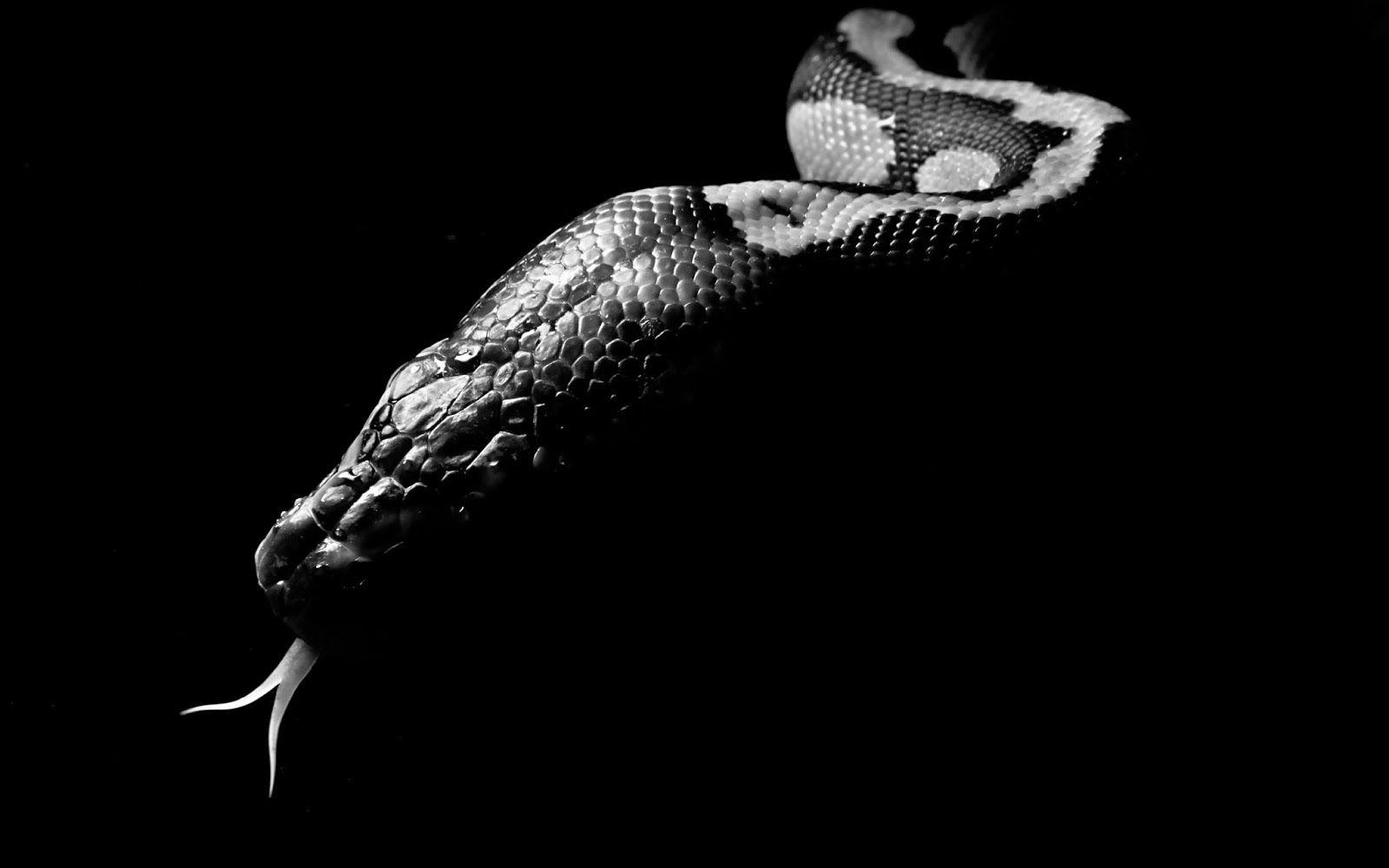
Water
Snakes were also commonly associated with water especially myths about the primordial ocean being formed of a huge coiled snake as in Ahi/Vritra in early Indian myth and Jormungand in Nordic myth. Sea monsters lived in every ocean from the seven-headed crocodile-serpent Leviathan of Hebrew myth to the sea-god Koloowisi of the Zuni people of North America and the Greek monster Scylla with twelve snake-necks. In some cultures, eels (which spend their early lives in freshwater before returning to the sea as adults) were regarded as magical creatures.
Rivers and lakes often had snake-gods or snake-guardians including Untekhi the fearsome water-spirit of the Missouri River. Until recently, some northern European communities held well dressing ceremonies to appease the snake-spirits which lived in village wells and told legends of saints defeating malevolent lake-snakes e.g. Saint George killing a maiden-devouring serpent or Saint Columba lecturing the Loch Ness Monster which then stopped eating humans and became shy of human visitors.
Carved stones depicting a seven-headed cobra are commonly found near the sluices of the ancient irrigation tanks in Sri Lanka; these are believed to have been placed as guardians of the water.

Wisdom
Snakes were associated with wisdom in many mythologies, perhaps due to the appearance of pondering their actions as they prepare to strike, which was copied by medicine men in the build-up to prophecy in parts of West Africa. Usually the wisdom of snakes was regarded as ancient and beneficial towards humans but sometimes it could be directed against humans. In East Asia snake-dragons watched over good harvests, rain, fertility and the cycle of the seasons, whilst in ancient Greece and India, snakes were considered to be lucky and snake-amulets were used as talismans against evil.
Tiresias gained a dual male-female nature and an insight into the supernatural world when he killed two snakes which were coupling in the woods.
The Biblical story of the fall of man tells of how Adam and Eve were deceived into disobeying God by a snake (identified as Satan by both Paul and John in II Corinthians and Revelation, respectively). In the story, the snake convinces Eve to eat fruit from the Tree of Knowledge of Good and Evil, which she then convinces Adam to do as well. As a result, God banishes Adam and Eve from the garden and curses the snake.
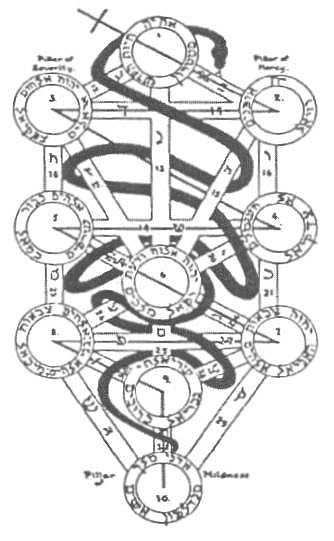

In the state of Kerala, India, snake shrines occupy most households. Snakes were called upon by the creator of Kerala, Parasurama, to make the saline land fertile. The Mannarasala Shri Nagaraja Temple is one of the main centres of worship. The presiding deity here is Nagaraja - a five-headed snake god born to human parents as a blessing for their caretaking of snakes during a fire. It is believed that Nagaraja left his earthly life and took Samadhi but still resides in a chamber of the temple.
Healing
Healing and snakes were associated in ancient Greek myth with Asclepius, whose snake-familiars would crawl across the bodies of sick people asleep at night in his shrines and lick them back to health.
In northern Europe and West Asia, snakes were associated with healing whilst in parts of South Asia, snakes are regarded as possessing aphrodisiac qualities. Greek myth held that people could acquire second hearing and second sight if their ears or eyes were licked by a snake.
